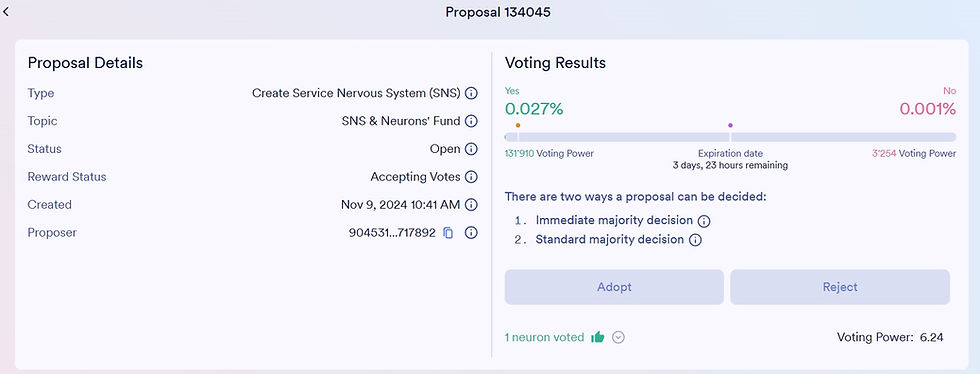What Are ICP Transactions and How Do They Work?
- EKOKE
- Jun 3, 2024
- 2 min read

The Internet Computer is a decentralized blockchain network that aims to revolutionize how we build and deploy applications. One crucial aspect of any blockchain is its transaction velocity, which refers to the speed at which transactions are processed and confirmed on the network.
How ICP Transactions Work
Canisters: In the Internet Computer ecosystem, smart contracts are called canisters. These canisters interact with each other and execute transactions. When a user initiates a transaction (e.g., transferring ICP tokens or interacting with a dapp), it triggers a series of actions within the canister.
Cycles: The Internet Computer measures computational work in cycles. Each transaction consumes a certain number of cycles based on its complexity. Think of cycles as the computational fuel required to execute a transaction.
Reverse Gas Model: Unlike traditional blockchains where users pay gas fees directly, the Internet Computer charges the canister smart contract for the resources it consumes. This approach, known as the reverse gas model, allows developers to provide a smoother user experience. End users are free from tedious tasks such as signing and approving every transaction they perform1.
Monitoring Transaction Velocity
To monitor transaction velocity on the Internet Computer, you can explore the ICP Dashboard. Here are some key metrics you’ll find there:
Transactions per Second (TX/s): This metric indicates how many transactions are processed by the network per second. It reflects the overall transaction velocity.
Cycle Burn Rate (Cycles/s): The rate at which cycles are consumed during transaction execution. Higher cycle burn rates may impact transaction speed.
Finalization Rate (Blocks/s): The speed at which blocks are finalized. A higher finalization rate ensures quicker confirmation of transactions.
Conversion Rate (ICP/Cycles): Measures the efficiency of converting ICP tokens into computational cycles. A higher conversion rate means more efficient resource utilization.
Power Consumption (kW): Indicates the energy consumption of the network during transaction processing2.
Fraud Prevention and Velocity
In addition to monitoring transaction velocity, the Internet Computer also employs fraud prevention mechanisms. For example, the Transaction IP Velocity Filter allows limiting the number of transactions received from the same IP address per hour. This helps prevent abuse and ensures fair resource allocation3.
Conclusion
ICP transaction velocity plays a crucial role in the network’s efficiency and user experience. As the Internet Computer continues to evolve, optimizing transaction speed while maintaining security will remain a top priority for developers and users alike. 🚀




Comments